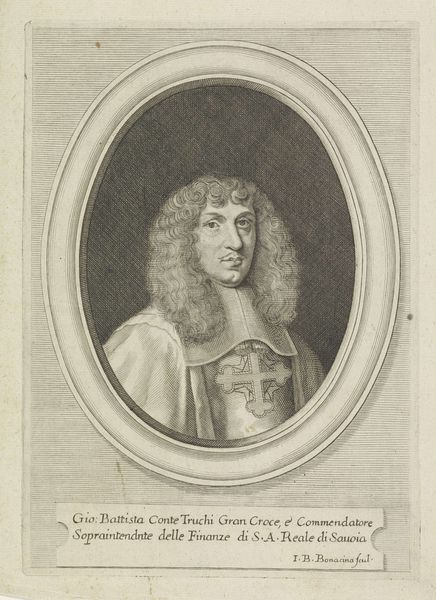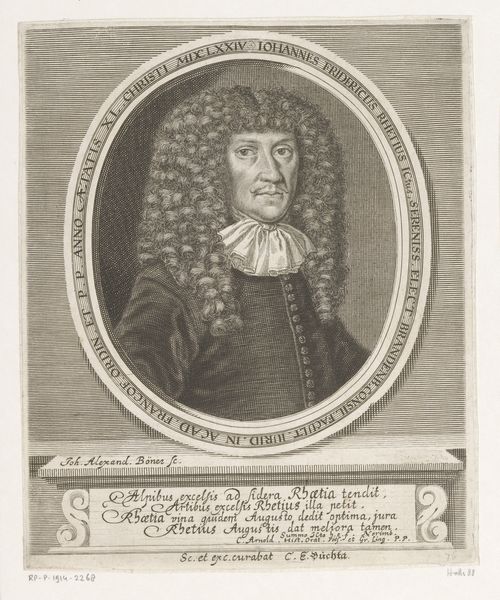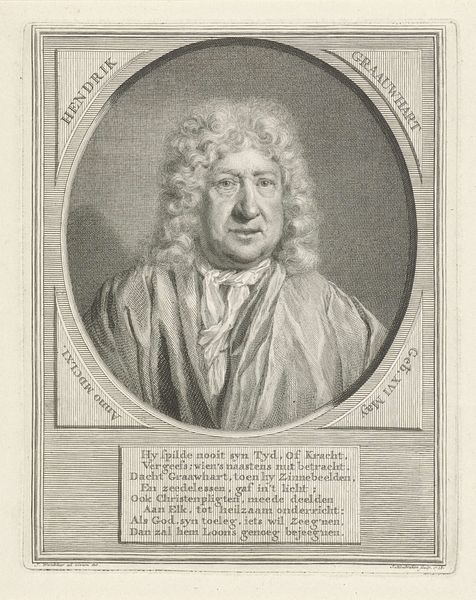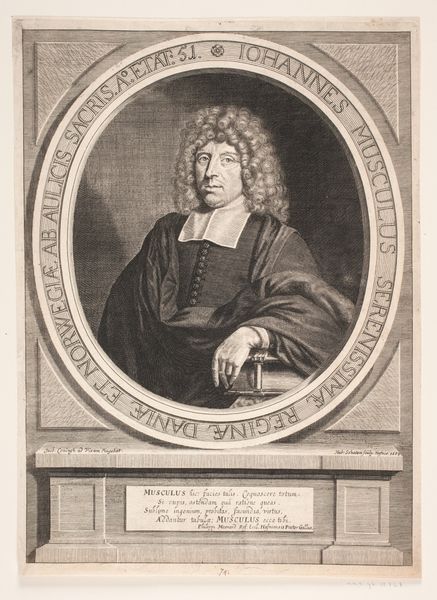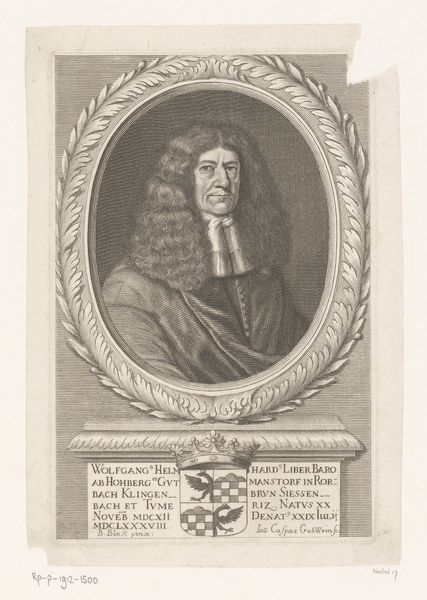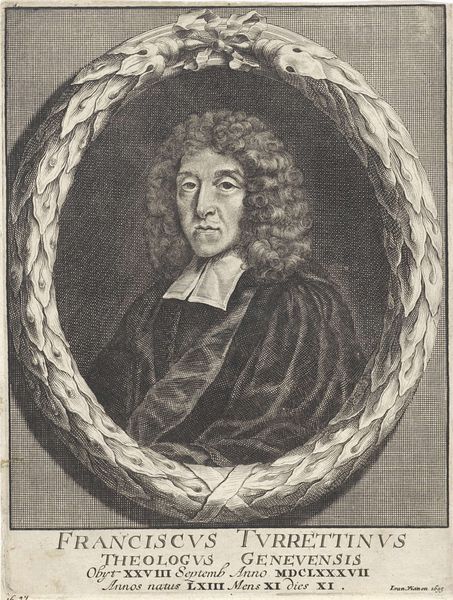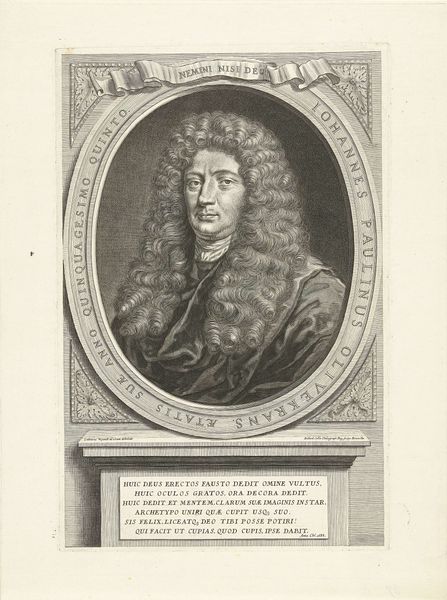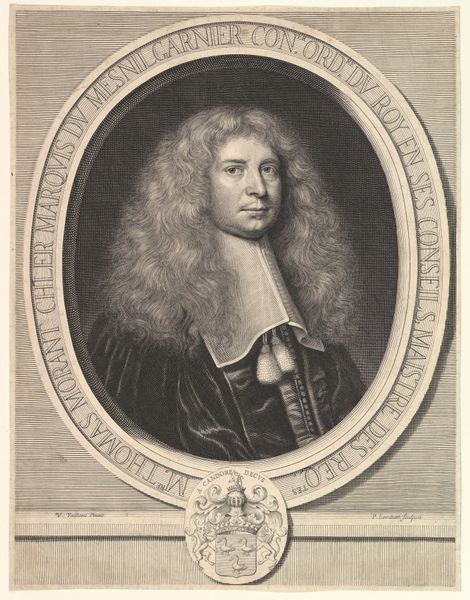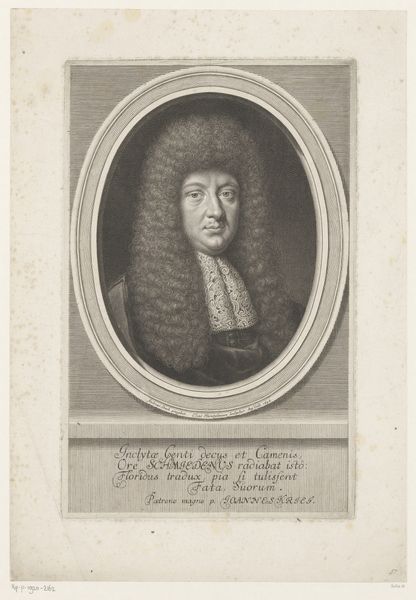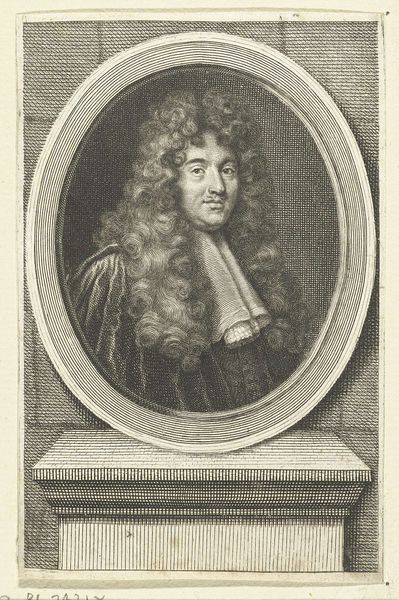
engraving
#
baroque
#
line
#
history-painting
#
engraving
Dimensions: height 270 mm, width 193 mm
Copyright: Rijks Museum: Open Domain
Editor: This is a portrait of Etienne le Moine, an engraving made between 1687 and 1691 by Anthony van Zijlvelt. I’m struck by the precision of the lines; it feels almost photographic, despite being so clearly hand-worked. What stands out to you in this piece? Curator: Well, I’m immediately drawn to the materiality of the engraving process itself. Consider the labor involved: the meticulous carving of the lines into the metal plate, the skilled inking and pressing. It’s a form of mechanical reproduction, yes, but one intimately connected to human skill and effort. Look at the texture, achieved entirely through manipulation of the burin! What does that labour tell us about the perceived importance of the person depicted, Le Moine? Editor: So, the engraving technique elevates him in some way? Is it more about the act of making than about the sitter himself? Curator: Precisely! This isn't just about representing Le Moine's likeness. It's about the societal structures that valued theologians and academics so highly. The printing press itself was a powerful tool and access to these materials reflected access to knowledge. Note also how the Baroque style lends itself to the portrait - and consequently the man - being framed in monumentality and reverence. Editor: That's fascinating. I hadn't considered how the very process of creating the image reinforces social hierarchies and also suggests power. The physical effort embedded in the work seems a world apart from our digital image-making today. Curator: Indeed. Examining the means of production highlights how art serves to not just reflect society, but actively construct and maintain it. A true feat considering the relatively simplistic tools used for the engraving. The final result becomes a window into the values and the labour systems that built it, even more than a window into the past. Editor: That gives me a whole new perspective. I was focused on the image itself, but now I appreciate how much the materiality speaks too. Curator: Exactly, and it allows a new lens through which to appreciate, and engage, with not only the final artwork but also the labour from which it sprung.
Comments
No comments
Be the first to comment and join the conversation on the ultimate creative platform.
